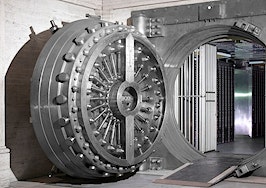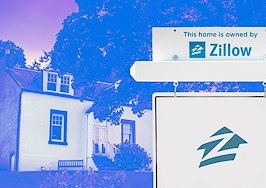Median single-family home prices grew on an annual basis in 99 percent of all markets analyzed by the National Association of Realtors (NAR) during the second quarter of 2021, with 94 percent of markets seeing double-digit price growth.
The median existing single-family home price rose 22.9 percent year over year during the second quarter to $357,900, an increase of $66,800 from the year before. Price growth was in the double digits across all regions, led by the Northeast at 21.8 percent.
“Home price gains and the accompanying housing wealth accumulation have been spectacular over the past year, but are unlikely to be repeated in 2022,” NAR Chief Economist Lawrence Yun said in a statement. “There are signs of more supply reaching the market and some tapering of demand. The housing market looks to move from ‘super-hot’ to ‘warm’ with markedly slower price gains.”
Twelve metro areas analyzed saw price gains of over 30 percent, largely in the South and West. The top three metros with the highest price gains included Pittsfield, Massachusetts (46.5 percent); Austin-Round Rock, Texas (45.1 percent); and Naples-Immokalee-Marco Island, Florida (41.9 percent).
After a long stretch of uncertainty, Yun noted that prices have started to surge in the San Francisco and New York metro areas, indicating signs of a turnaround in those regions.
Over the past three years, home prices made significant gains in 46 out of 182 markets, where homeowners saw price gains of over $100,000, compared to the typical price gain of $89,900 on an existing single-family home seen over that three-year period. The biggest gains were seen in San Francisco-Oakland-Hayward, California ($315,000); San Jose-Sunnyvale-Santa Clara, California ($294,000); and Anaheim-Santa Ana-Irvine, California ($279,500).
Those increasing prices led to the monthly mortgage payment on an existing single-family home financed with a 30-year fixed-rate loan and a 20 percent down payment to rise to $1,215, up $196 from the year before.
That mortgage payment growth came even as the 30-year fixed mortgage rate decreased to 3.05 percent from 3.29 percent the year before.
“Housing affordability for first-time buyers is weakening,” Yun said. “Unfortunately, the benefits of historically-low interest rates are overwhelmed by home prices rising too fast, thereby requiring a higher income in order to become a homeowner.”
The mortgage payment on a 10 percent down payment loan rose to 25 percent of a first-time buyer’s income, up from 21.2 percent the year before. A mortgage is generally considered affordable if payments make up no more than 25 percent of a family’s income.
Across 17 metro areas analyzed, a household needed more than $100,000 to affordably be able to pay a 10 percent down payment mortgage, including in a number of metros in California (San Jose, San Francisco, San Diego, Los Angeles), Hawaii (urban Honolulu), Colorado (Denver, Boulder), Washington (Seattle), and other states.
In 84 metro areas a family was able to afford a home with less than $50,000, down from 104 markets where this was achievable during the first quarter of 2021. The most affordable markets included Youngstown-Warren Boardman, Ohio ($24,401 10 percent down payment); Peoria, Illinois ($24,013); and Cumberland, Maryland ($23,773).
“Housing supply will be critical in moderating the growing housing costs and rising rents,” Yun said. “Any disincentive to produce more housing inventory, such as extending the eviction moratorium, will only worsen the current shortage.”
Yun added that NAR has also urged for the “expeditious release” of rental assistance funds to help renters facing eviction.













